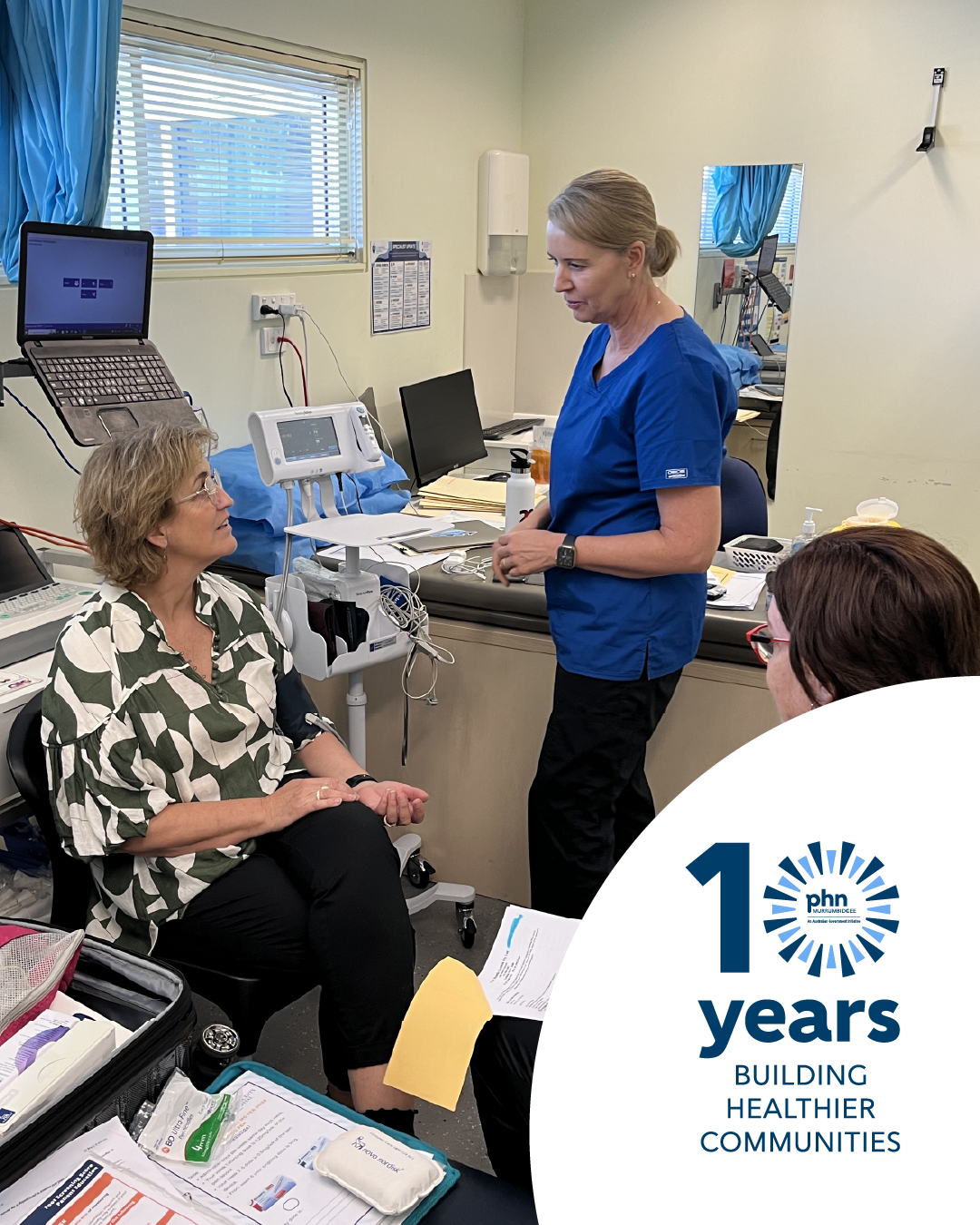Celebrating 10 years of Primary Health Networks
A decade of local impact in the Murrumbidgee
This year marks 10 years since the establishment of Primary Health Networks (PHNs), a national network of 31 organisations created to improve the efficiency and effectiveness of Australia’s healthcare system, particularly for those at risk of poor health outcomes.
Since 2015, PHNs have played a vital role in shaping a more connected, community-focused health system. Operating at the regional level, PHNs identify service gaps, support the primary care workforce, and commission innovative programs that respond to local needs.
Murrumbidgee Primary Health Network (MPHN) CEO Stewart Gordon said the anniversary is an opportunity to recognise the impact of local leadership and collaboration in improving health outcomes across the region.
“While the PHN model was established in 2015, our organisation has been supporting primary healthcare in the Murrumbidgee for more than 30 years,” Mr Gordon said.
“Becoming a PHN strengthened our ability to respond to local health priorities. Over the past decade, we’ve deepened our partnerships, co-designed services with community, and worked to deliver more connected, accessible care across our region.”
A decade of local innovation
Over the past 10 years, MPHN has delivered a wide range of locally tailored initiatives to improve access, equity and health outcomes across the region.
Highlights include launching the Vitality Passport to reduce frailty in older adults, topping the nation for HPV vaccinations, and co-designing impactful health initiatives such as the Way Back Support Service, WARATAH, and MyStep to Mental Wellbeing.
We also helped Berrigan become the first fully connected My Health Record town in Australia, established the Wagga GP After Hours Clinic, and delivered drought, bushfire and flood recovery grants.
With the help of Murrumbidgee Local Health District and St Vincent’s Hospital Sydney, MPHN pioneered outreach models like specialist diabetes and cardiology clinics in rural towns.
Community engagement has been strengthened through programs like Conversations on the Couch and Yarns on the Couch, while public health responses included the rollout of COVID-19 respiratory clinics, suicide prevention campaigns, and pop-up vaccination and food clinics.
Across all initiatives, MPHN has focused on delivering care closer to home, supporting the health workforce, and ensuring no one falls through the cracks.
Looking ahead
Primary Health Networks across Australia are key drivers of national reform, supporting initiatives such as Medicare Mental Health Centres, Urgent Care Clinics, after-hours programs, and digital health tools.
As the health landscape continues to evolve, Mr Gordon said long-term funding and flexible contracting arrangements will be critical to sustaining the momentum.
“We know our region, we know what works, and we’re ready to do more,” Mr Gordon said.
“With greater flexibility and a stronger focus on outcomes, PHNs can continue delivering real, lasting improvements, especially in early intervention and prevention.”
For 10 years, PHNs have been reshaping how care is delivered across Australia. In the Murrumbidgee, that work continues, with a clear focus on access, connection and healthier communities for all.


